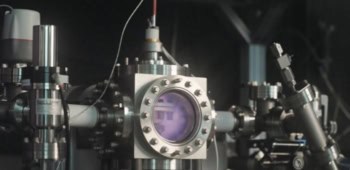A new method to kick-start nuclear fusion has boosted hopes of harnessing the energy that powers the Sun. Scientists from Japan and the UK have used lasers to both compress and ignite the nuclear fuel, a technique that could be scaled-up to power reactors that produce hundreds of times more energy than they consume (R Kodama et al 2001 Nature 412 798).
Nuclear fusion is an attractive potential source of energy because the two isotopes of hydrogen used for fuel – deuterium and tritium – are readily available. It also produces no carbon dioxide or long-lived radioactive decay products. However, a temperature of about 50 million degrees is required to overcome the repulsion between the fusing deuterium and tritium nuclei.
The new ‘fast ignition’ technique has been demonstrated by Ryosuke Kodama and colleagues of Osaka University and researchers from the Rutherford Appleton Laboratory, Imperial College and the University of York in the UK. Like the conventional ‘inertial confinement’ method, fast ignition uses laser pulses to compress pellets of deuterium and tritium and the exploding plasma surrounding the pellets causes an equal and opposite implosion of the fuel. But unlike the old approach, in which the compressed fuel is heated by the collapse of accurately timed shock waves, fast ignition uses a second, shorter, laser pulse to start the fusion chain reaction.
The technique requires a less precise implosion but is more difficult because the short laser pulse is deflected by instabilities it creates in the plasma. The researchers resolved this problem by inserting a polymer cone inside the fuel pellet, which allows the beam to pass through unimpeded.
The use of a second laser halves the amount of energy needed to power the long-pulsed laser. The team now needs to establish if increasing the energy of the short-pulsed laser raises the fusion temperature. “At the moment the minimum energy conversion efficiency from laser to thermal energy is 20%,” says Kodama. “We want to see if this maintains itself as we go to higher energy levels when we will actually get ignition.”
Michael Key of the Lawrence Livermore National Laboratory in California, writing in a complementary article in Nature, says that if it is feasible at higher energies, fast ignition could lead to serious international efforts to produce fusion. But he cautions that the experiences of other fusion projects should temper such enthusiasm. “At such an early stage,” he says, “this new approach to fusion energy should be viewed as promising, but speculative, until much more work has been done.”


